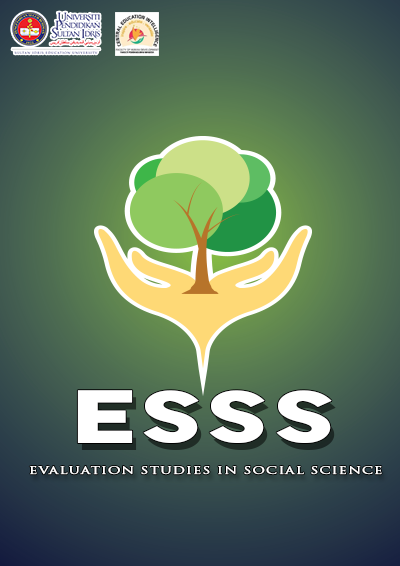Perception on Sexuality Education in Secondary Schools: An Exploratory Study among University of Cyberjaya Students
DOI:
https://doi.org/10.37134/esss.vol2.sp.12.2021Keywords:
Sexuality education, secondary schools, social problems, MalaysiaAbstract
The Malaysian government has introduced sexual education in schools; however, the misbehaviour of sexual activities among Malaysian teenagers is quite alarming. Therefore, we aim to explore the experience and opinion of sexuality education in secondary schools among University of Cyberjaya students who have recently completed their school years here. A semi-structured in-depth one-to-one interview was conducted among ten foundation and undergraduate students. The interviews were carried out and recorded online which were further transcribed verbatim then reviewed and coded manually into themes. Two themes have emerged which was experience and opinion about sexual education in secondary schools. Regarding experience, the respondents have agreed that their science knowledge was increased in secondary school. However, all the respondents said that the content was not sufficient, and it was a brief topic taught in Science and Islamic studies. Several barriers in sexual education were identified in the study including inexperience educators, shameful and stigma towards sexual education, lead to unclear, incomprehensive, delivered casually, and not helpful in facing the real world. Hence, they have strong opinion that sex education should be formally imparted while some suggested that sex education should not only be in science and Islamic subjects but can be included in other subjects as well. Comprehensive sexual education is essentially needed and it should be integrated into some subjects in secondary school’s curriculum. This study also suggests different ways of teaching methods implemented at different ages which cover cognitive, physical, emotional, and social aspects to reduce irresponsible acts and sexual risk behaviours and to prepare them to face the real adulthood world in the future.
Downloads
References
Boonstra, H. (2010). Sex education: Another big step forward—and a step back. The Guttmacher Policy Review, 13(2), 27–28. Retrieved from https://www.guttmacher.org/gpr/2010/06/sex-education-another-big-step-forward-and-step-back.
Breuner, C. C., & Mattson, G. (2016). Sexuality education for children and adolescents. Pediatrics, 138(2). https://doi.org/10.1542/peds.2016-1348
Esere, M. O. (2008). Effect of sex education programme on at-risk sexual behaviour of school-going adolescents in Ilorin, Nigeria. African Health Sciences, 8(2). https://doi.org/10.4314/njgc.v11i1.36988
Ghani, F., & Awin, N. (2020). Sexuality Education across selected Muslim countries: A review to inform Malaysia’s 2020-24 National Reproductive Health and Social Education Plan of Action. Retrieved from http://collections.unu.edu/view/UNU:7886.
IPH. (2018). National Health and Morbidity Survey (NHMS) 2017 : Key Findings from the Adolescent Health and Nutrition Surveys; Infographic Booklet. Institute for Public Health, National Institutes of Health, The Ministry of Health, Malaysia, April, 29. Retrieved from https://iku.moh.gov.my/images/IKU/Document/REPORT/NHMS2017/AHSReportNHMS2017.pdf.
Ivankovich, M. B., Fenton, K. A., & Douglas, J. M., Jr (2013). Considerations for national public health leadership in advancing sexual health. Public health reports (Washington, D.C. : 1974), 128 Suppl 1(Suppl 1), 102–110. https://doi.org/10.1177/00333549131282S112
Jiar, Y. K., Lee, S. H., & Handayani, L. (2018). Effort of NGO in promoting comprehensive sexuality education to improve quality of life among local and refugee communities. International Journal of Evaluation and Research in Education (IJERE), 7(1), 17-24. https://doi.org/10.11591/ijere.v1i1.11237
Kanavathi, F. and A. (2019). Comprehensive sexuality education for Malaysian adolescents: How far have we come? National Report on The State of the Region Report on Sexual and Reproductive Health and Rights: International Conference on Population and Development (ICPD+25),1–141. Retrieved from https://arrow.org.my/wp-content/uploads/2019/04/FRHAM-ICPD-25-Final-Report-proofread-and-formatted-Jeremy-Final.pdf.
Khalaf, Z. F., Low, W. Y., Merghati-Khoei, E., & Ghorbani, B. (2014). Sexuality education in Malaysia: Perceived issues and barriers by professionals. Asia-Pacific Journal of Public Health, 26(4). https://doi.org/10.1177/1010539513517258
Khalesi, Z. B., Simbar, M., & Azin, S. A. (2017). A qualitative study of sexual health education among iranian engaged couples. African Health Sciences, 17(2), 382–390. https://doi.org/10.4314/ahs.v17i2.12
Kirby D. (1999). Sexuality and sex education at home and school. Adolescent medicine (Philadelphia, Pa.), 10(2), 195–v. Retrieved from https://pubmed.ncbi.nlm.nih.gov/10370704/.
Kirby, D., Obasi, A., & Laris, B. A. (2006). The effectiveness of sex education and HIV education interventions in schools in developing countries. World Health Organization technical report series, 938, 103–341. Retrieved from https://pubmed.ncbi.nlm.nih.gov/16921919/.
Kumar, R., Goyal, A., Singh, P., Bhardwaj, A., Mittal, A., & Yadav, S. S. (2017). Knowledge attitude and perception of sex education among school going adolescents in Ambala district, Haryana, India: A cross-sectional study. Journal of Clinical and Diagnostic Research, JCDR, 11(3), LC01–LC04. https://doi.org/10.7860/JCDR/2017/19290.9338
Mutalip, S. S. M., & Mohamed, R. (2012). Sexual education in Malaysia: Accepted or rejected? Iranian Journal of Public Health, 41(7), 34–39. Retrieved from https://www.ncbi.nlm.nih.gov/pmc/articles/PMC3469017/.
Rada, C., Albu, A., & Petrariu, F. D. (2013). Age at initiation of sexual life, protection at first intercourse and sources of information regarding sexual and reproductive health. Revista Medico-Chirurgicalǎ̌ a Societǎ̌ţii de Medici Ş̧i Naturaliş̧ti Din Iaş̧i, 117(4), 994–1001. Retrieved from https://pubmed.ncbi.nlm.nih.gov/24502081/.
Rashid, A., Finnikin, S., & Tackett, S. (2021). Accreditation drives teaching: Evidence-based medicine and medical education standards. In BMJ Evidence-Based Medicine. BMJ Publishing Group. https://doi.org/10.1136/bmjebm-2020-111491
Schaalma, H. P., Abraham, C., Gillmore, M. R., & Kok, G. (2004). Sex education as health promotion: What does it take? Archives of Sexual Behavior, 33(3), 259-269. https://doi.org/10.1023/B:ASEB.0000026625.65171.1d
Talib, J., Mamat, M., Ibrahim, M., & Mohamad, Z. (2012). Analysis on sex education in schools across Malaysia. Procedia - Social and Behavioral Sciences, 59. https://doi.org/10.1016/j.sbspro.2012.09.284





